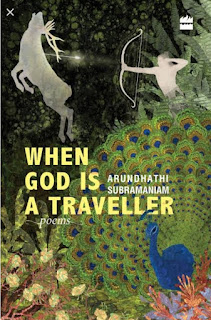#SUNDAY READING
#Thinking Activity
Hello readers!
Welcome to my blog, here on this holi we have thinking activity on festival of bonfire, which is celebrate worldwide, so here I would like to refers brief introduction of bonfire, history and myth behind it as well as how many Countries celebrate this festival.
#What is bonfire?
A bonfire is a large and controlled outdoor fire, used either for informal disposal of burnable waste material or as part of a celebration.
#Bonfire Night
Bonfire Night is a name given to various annual celebrations characterised by bonfires and fireworks. The event celebrates different traditions on different dates, depending on the country. Some of the most popular instances include Guy Fawkes Night (5 November) in Great Britain which is also celebrated in some Commonwealth countries; Northern Ireland Eleventh Night (11 July), and 5 November in Newfoundlan and rabrador In various parts of Ireland, Bonfire Nights are held on St. John Lewis(23 June), Bealtaine eve (30 April) and Halloween (31 October). In Scandinavian it is known as Walpurgis Night(30 April) and in Denmark's also (23 June). St. John's Eve's is also a very important celebration in Spain and Northern Portugal. Several other cultures also include night-time celebrations involving bonfires and/or fireworks.
# How many countries celebrate Bonfire? Why?
Diwali - India
The best-known Hindu festival is known as the “festival of lights.” Diwali (or Deepavali) means “rows of lighted lamps” and, during this time, houses, shops and public places are decorated with diyas (small earthenware oil lamps), elaborate feasts are prepared and spectacular fireworks displays light up the skies.
The five-day festival (November 13-17 this year) celebrates the triumph of good over evil and is celebrated throughout India and around the world (in Singapore, Trinidad and Tobago, Mauritius, Myanmar and London among many others).
Guy Fawkes Night (Bonfire Night) - England
“Remember, remember the fifth of November - gunpowder, treason and plot” goes the nursery rhyme, chanted in the run-up to Guy Fawkes Night (November 5). It goes back to 1605 when Guy Fawkes, one of the members of the Gunpowder Plot, was arrested while guarding explosives in the House of Lords, London. With the plot to blow up the House of Lords - and kill King James I - foiled, Londoners lit bonfires around the city in celebration.
The bonfire tradition continues to this day, and usually there’s an effigy of Guy Fawkes placed at the centre of it. One of the biggest celebrations is in the town of Lewes in Sussex where, in recent years, effigies of various current figures, including those from the UK banking world, have been burned.
Daizenji Tamataregu Shrine’s “Oniyo” - Fukuoka, Japan
Fukuoka, capital of Fukuoka Prefecture on Kyushu Island, is one of Japan’s largest cities and hosts one of its oldest fire festivals. Daizenji Tamataregu Shrine’s “Oniyo” (Fire Festival) is a ceremony to drive away evil spirits that has been practiced for 1,600 years. It’s held in early January each year. A “devil fire” that has been guarded at the temple is transferred - at around 9 p.m. on the seventh day (January 7) - to six massive torches measuring one meter in diameter and 15 meters long.
The torches are transported around the grounds of the shrine by a group of men in loincloths. It sounds like a potential health-and-safety issue, but it’s considered to be good luck if embers or ash from the torches fall on them.
Jeongwol Daeboreum Deulbul Festival - Jeju, S. Korea
In early February, the Jeongwol Daeboreum Deulbul Festival takes place on the island of Jeju off the coast of South Korea. It’s a fairly new festival, younger than 20 years old, but its origins go back to the time when families kept cows.
To keep the grass grazeable, farmers set fire to the fields in the mountains to destroy old grass and kill harmful insects. Today, a hilltop is set alight to pray for health and a good harvest in the coming year. There’s a torchlight march, straw-rope making competition and deumdol (rock) lifting.
Samhain 2012 - Out of the Darkness - Altoona, Florida, USA
More than 500 pagans gather in Florida for the state’s largest pagan festival. Running from October 31 to November 4 at Camp Ocala, each day is filled with feasting, rituals, drumming, dancing and live entertainment.
The main ritual in 2012 is centred around the “Burning Times” when so-called “witches” were put to death.
Quema del Diablo (Burning of the Devil) - Guatemala
In early December Guatemalans ready themselves for the Christmas season by...driving the devil from their homes and burning him in the streets! For centuries - at least since the 1700s - the traditional ceremony has been performed to chase bad spirits from homes and neighborhoods.
By watching bonfires, firework displays and burning devil figures in the streets, locals say they are spiritually cleansing themselves. The tradition is best experienced in Guatemala City and Antigua, but many towns throughout Guatemala host similar ceremonies.
Thank you...








